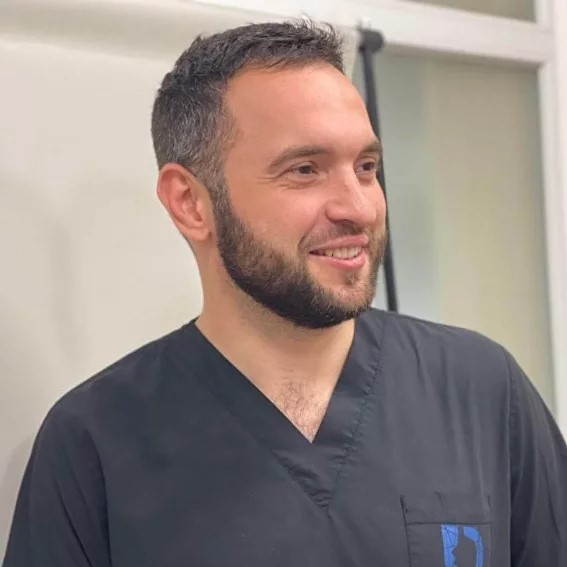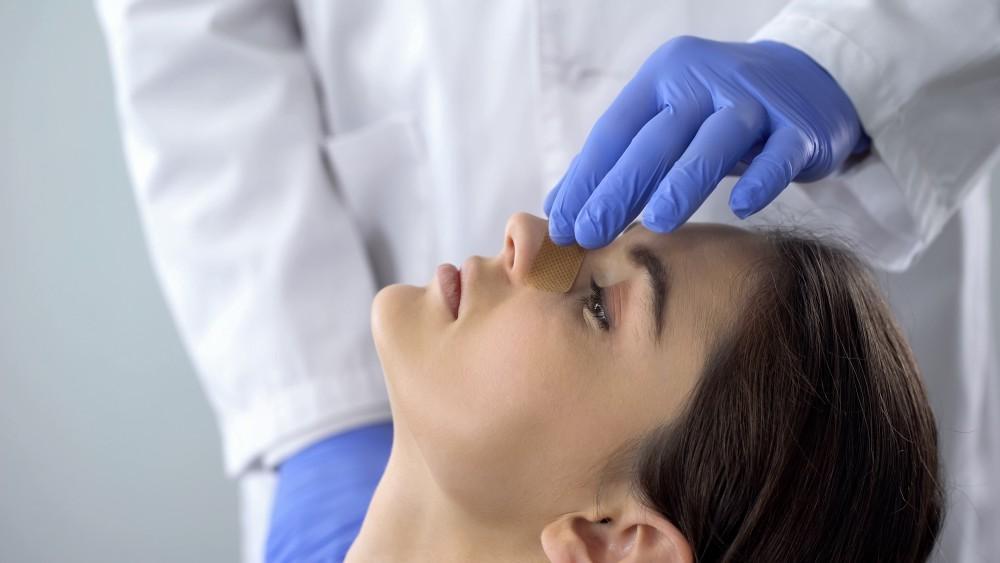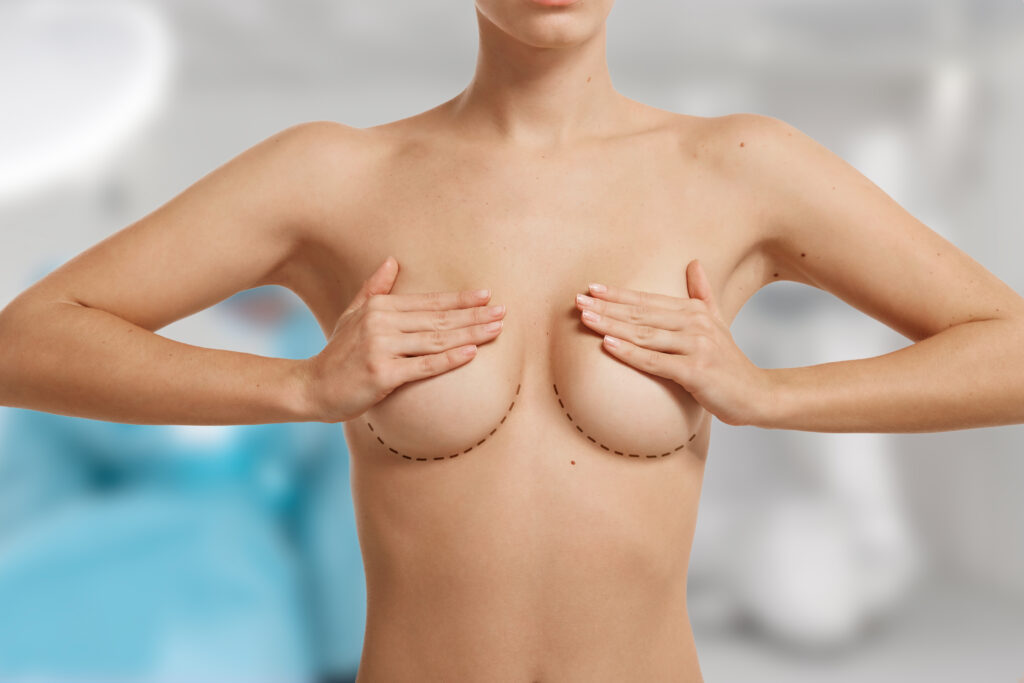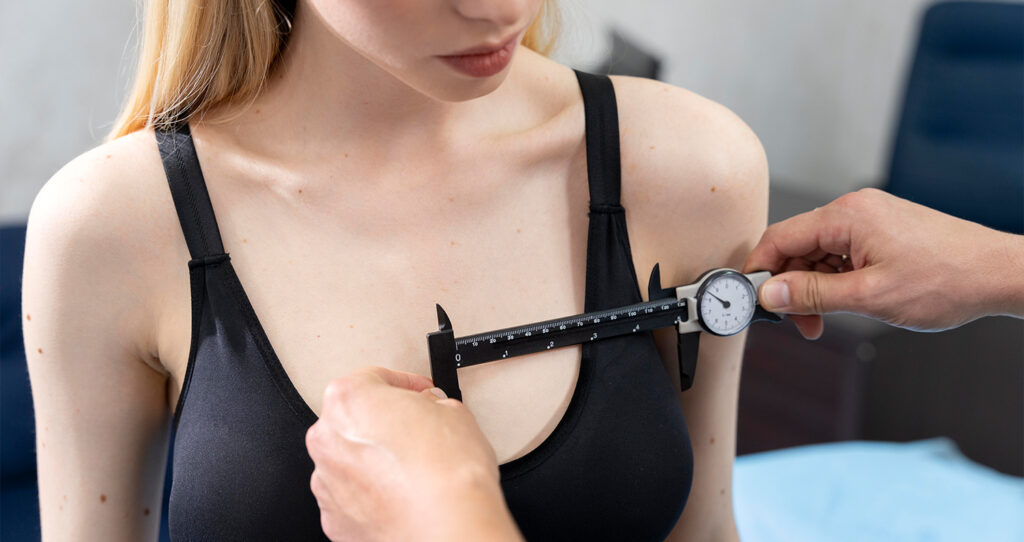If a person is unhappy with the aesthetics of his nose, he has two options. One can either suffer for years at the first glance in the mirror or go to a professional who can give his nose a Hollywood profile in 2-3 days.
Unfortunately, it’s as easy as that only on advertising banners. Rhinoplasty is one of the most complex operations in the entire field of plastic surgery. There are many mutually exclusive indications that must be considered before deciding to undergo surgery. People who do not have special medical or at least cosmetology education often find themselves overwhelmed by this kind of information maelstrom. That’s why I decided to write this article and give answers to all the questions that arise for people who are thinking about a nose job.
Rhinoplasty and septoplasty
Plastic surgery has a very broad conceptual apparatus, so first, we need to separate the key definitions:
- If you want to correct physical nasal defects, you need to have a septoplasty. Such a procedure is aimed at correcting problems associated with a deviated septum, which causes breathing complications, snoring, and weakened immunity. Predominantly septoplasty is performed after a very detailed examination and getting specific recommendations from the surgeon, so in this article, I will not elaborate on this type of nasal correction.
- If your goal is to improve the aesthetic appearance of the nose, you will need to perform exactly a rhinoplasty. This operation is aimed at changing the external contours and proportions of the nose in order to correct aesthetic deformities, both congenital and acquired.
Effectiveness and types of rhinoplasty
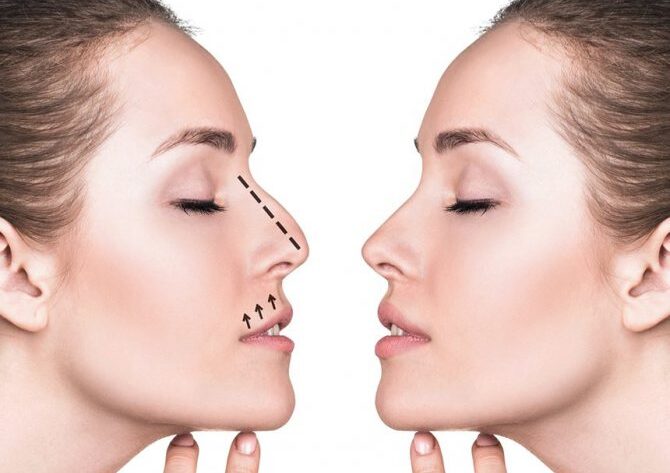
The possibilities offered by modern rhinoplasty are truly impressive. However, it is important to understand that a nose job is not a “magic pill”. If you bring the surgeon a photo of your favorite actress or model, he is unlikely to be able to model someone else’s nose on your face.
This happens due to the individual internal structure of your nose, the shape of your face, the initial condition of the working material, and so many factors.
That is why you should be realistic and understand that rhinoplasty is not a full-fledged nose replacement, but only a partial upgrade of the existing material.
The effectiveness of rhinoplasty
If we talk about real aesthetic defects, in the presence of which you should go to a surgeon, they can be reduced to 7 points:
- An overly large, long, or wide nose;
- Saddle nose;
- “Hunchback” on the nose;
- A thickened nasal tip;
- Asymmetrical or wide nasal wings;
- Congenital or acquired scars;
- Nostrils that are too large or swollen.
As for congenital defects, it may not be possible to correct even the slightest of individual flaws. However, if you have the above defects, in 90% of cases you can get rid of them with rhinoplasty.
Types of rhinoplasty

The methodology of rhinoplasty includes so many techniques, methods, and variations that only certified specialists can understand them. For a potential patient, there are only two concepts to understand: open rhinoplasty and closed rhinoplasty.
Open rhinoplasty
To do this, the surgeon makes incisions in the natural nasal folds, between the nostrils, and at the base of each nostril. The skin is separated from the cartilage, after which the doctor performs the necessary manipulations to remove, augment, or correct the exposed area of cartilage or bone.
This procedure carries certain postoperative risks because it requires an open incision. It is now used only in the case of a series of consecutive surgeries to dramatically change the aesthetics of the nose, in a repeat rhinoplasty, or in the case of a completely missing nose.
Closed rhinoplasty
I personally recommend a closed rhinoplasty. In this procedure, all the surgical manipulations are done through the nostrils. Thanks to this, you won’t have any visible postoperative cuts after the surgery. Modern technology allows you to eliminate almost any aesthetic defect through a closed rhinoplasty, so the surgeon with sufficient training, mainly practices this type of operation, because it requires more skill, but it is much more effective for the patient.
You can use this fact as a kind of a life hack. If the surgeon you went to immediately categorically insists on an open surgery, it is a reason to doubt his qualifications.
Technical material options
Taking into account the type of operation and the defect that needs to be corrected, together with the surgeon, you are responsible for choosing the technical material. This material will be used for proofreading.
Inner cartilage
The most popular technical material for rhinoplasty is internal nasal cartilage. In this surgery, part of the cartilage from one area of the nose is transferred to the surgical site. It is possible to perform the correction without integrating extraneous implants. This minimizes all postoperative risks related to the possible non-healing of the implant in the nose.
Silicone implant
The silicone implant is mainly used in operations to enlarge the entire nose or a part of it. This surgery does not involve rearrangement of the internal structure of the nose, so the surgery process is less traumatic. However, the implant is a foreign body, so if the quality of the silicone is unsuitable, you may experience certain postoperative difficulties.
Surgeon qualifications
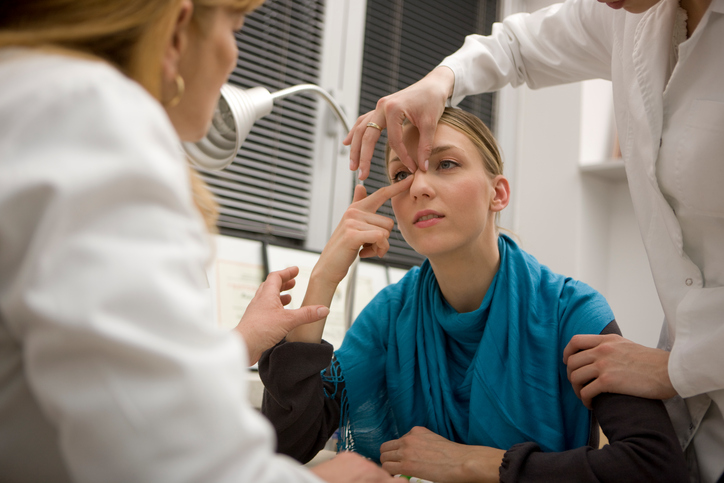
Plastic surgery is not yet sufficiently regulated by law, so rhinoplasty can be performed by both highly specialized specialists and general surgeons, or even otolaryngologists.
Rhinoplasty is one of the most difficult plastic operations, so the surgeon to whom you are going should have the appropriate qualifications:
- During your consultation, be sure to ask how many surgeries does your surgeon perform in an average year?
A surgeon must perform at least 50 such surgeries per year to gain rhinoplasty skills and maintain qualifications. Therefore, if this number is less, your surgeon is probably a generalist whose work should not be expected to produce significant results;
- Ask for a detailed portfolio of your surgeon.
If the surgeon has enough experience in performing rhinoplasty, then accordingly he should have a large portfolio of his previous work. Look through it in detail and draw conclusions for yourself whether you are satisfied with such a style and result;
- Ask if the surgeon attends foreign professional conferences on rhinoplasty.
Since plastic surgery is very dynamic, the only option for most surgeons to maintain their skills is to attend professional conferences.
In general, a plastic surgeon should have significant experience in performing exactly the surgery you want to do. Only such a doctor will be able to make your dream come true. So I advise you to be very picky about it.
Surgery process
Pre-surgery period
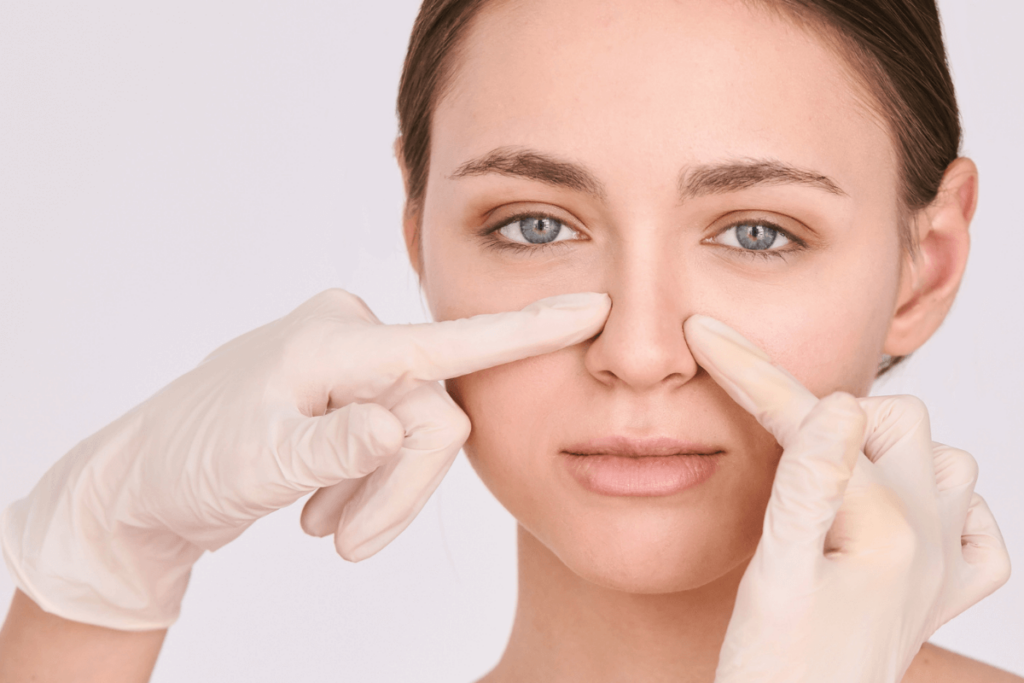
The pre-surgery period begins when the patient decides to have the surgery and ends on the doorstep of the operating room.
During this time, you will need to discuss in detail with the surgeon the desired result and undergo a series of examinations, which should reveal any individual contraindications. Since rhinoplasty is an operation on the verge of aesthetic and functional surgery, all possible contraindications must be identified so that the cosmetic correction does not harm the nasal system.
After the preliminary examination, a computer model of your future nose is constructed. Modern technology allows us to look at how harmonious your dream nose will look on your face. This allows you to assess whether or not you really need a rhinoplasty and tweak your initial wishes.
Computer graphics have not yet reached 100% accuracy, so always ask the surgeon if the result of his work is identical to the computer model.
Series of surgeries under one anesthetic
If you are not planning to limit your body correction to rhinoplasty, I suggest you considering a series of surgeries under one anesthetic.
For example, if in addition to rhinoplasty you would like to perform a chin correction (mentoplasty), you can combine these two corrections and perform them one by one within one plastic surgery session.
This technique involves a number of specialists, each of whom specializes in a different part of the body. Therefore, if you go to a highly specialized surgeon for rhinoplasty, you should not worry that he will not be able to perform additional surgery. All professional plastic surgeons work closely with their colleagues with related specialties, so the organization of such a consistent correction is a standard activity for the staff of plastic surgery clinics.
It should be noted that not all plastic surgeries can be performed under a single anesthetic. For example, rhinoplasty is incompatible with gluteoplasty (buttock lift) because postoperative rehabilitation is impossible with such an operating configuration. However, such exceptions are quite individual, so your surgeon will definitely give you detailed advice on this issue.
Surgery period
Once you have entered the operating room, you need to relax and trust a professional. Most surgeons perform rhinoplasty under general anesthesia, so you will not feel any discomfort during the surgery.
Forget about the myths told on low-brow internet forums about the dangers of anesthesia. All of the drugs used to put the patient into general anesthesia undergo a very lengthy licensing and certification process. They are no more harmful to a patient’s health than aspirin or citramone.
If you still have a fear of anesthesia, an alternative option is to use local anesthesia, which anesthetizes the nasal cavity area exclusively. Nowadays, it is only used when correcting the result of the main surgery, because such a procedure can be accompanied by surgical difficulties. Obviously, the view of the incision in real-time is not what you have dreamed of all your life. However, if you subconsciously can not overcome the fear of anesthesia, it is quite an acceptable alternative.
Post-surgery period
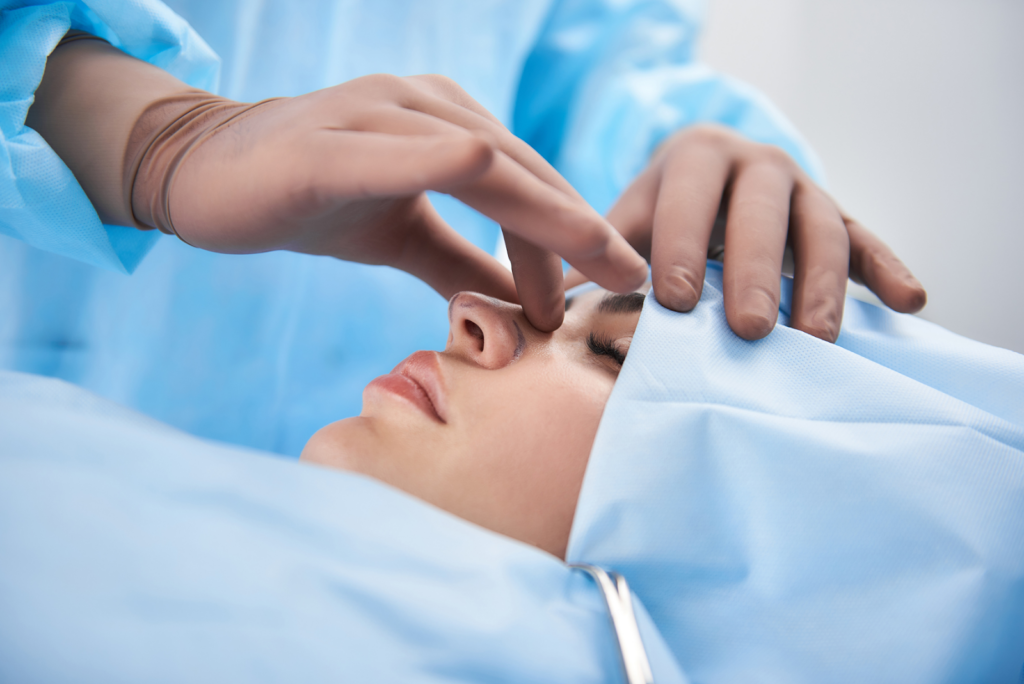
Rehabilitation after rhinoplasty takes a year. But don’t think that you have to spend that year with a bandage on your nose. In fact, it’s much easier than you may think.
Period of unpresentability
At first, you will have to go through a period of unpresentable appearance, which will last for 2 weeks. At this time, there will be visible postoperative marks on your face, which must be covered with a special medical bandage.
After passing this period, the surgeon will evaluate the result of the surgery and, if there are no defects, remove the bandage.
Period of apparent change
Then there will be a period of apparent change for about 4 weeks. During this time you will need to apply the bandage yourself at night. You will not need to use it during the day if there are no individual indications.
During this period, the swelling on your nose will be visible to others, so you will need to minimize your activity and communication.
After 4 weeks, all visible swelling will disappear and you will be able to return to your routine life.
Period of implicit changes
Eventually, you will have a period of implicit change that will last for about 10 months. During this time, the internal integration of your implant will take place. This process will be accompanied by some changes in the shape of your nose, but these changes will not be visual, so neither you nor others will notice any swelling or visible transformation.
In general, do not think that the rehabilitation process is very difficult. In as little as 2 weeks, you will be able to return to your routine, and in 6 weeks, your nose will have its final visual shape.
Possible complications after rhinoplasty

Rhinoplasty is a surgical procedure, so it can be accompanied by the following post-surgery risks:
- Nasal bleeding;
- Skin irritation from the dressing;
- Excessive formation of connective tissue;
- Creation of a bone callus;
- Increased scarring
In most cases, thanks to a complete examination and a highly qualified surgeon, these risks can be avoided, and if they occur, they can be eliminated by non-surgical methods through the use of physical therapy and medication.
Revision rhinoplasty
Revision rhinoplasty — this is an additional correction of the nose, which is carried out when the patient is dissatisfied with some aspect of the correction. If after surgery the final result will be at variance with the layout, the clinic will definitely offer you the opportunity to correct such aesthetic defects for free.
Peculiarities of repeat rhinoplasty
If you decide 5 to 10 years after rhinoplasty to have an additional nose job, you need to consider the features of a repeat rhinoplasty:
- The degree of change during repeat rhinoplasty is much less than with the initial correction.
During the first rhinoplasty, there are changes in the natural structure of the nose, so each subsequent correction gives the surgeon less opportunity to re-build the inner cartilage and consequently significant visual changes;
- For a repeat rhinoplasty, it is best to go to the surgeon where you had your initial correction.
During rhinoplasty, each surgeon transforms the nasal cavity depending on their individual work style, so often another specialist will be less effective than the surgeon who is the architect of your nose structure;
- A repeat rhinoplasty will be more expensive than the initial correction.
Complications are described above, so a repeat rhinoplasty will be at least 30% more expensive than the initial correction. This applies to the price of technical materials as well as the cost of the surgeon’s work.
A repeat rhinoplasty is a necessary surgery if in your opinion the initial result is unsatisfactory, but it comes with additional complications, you should not overuse this procedure.
Non-surgical rhinoplasty
Fillers

If you want to enlarge your nose, but do not want to undergo a surgical procedure, I recommend replacing surgery with the introduction of special preparations — fillers, which are very similar to implants.
However, you should understand that the filler is a liquid, and the only effect that can be obtained from its use is the expansion of the selected area of the nose. Unfortunately, in most cases, this is not enough for a correction that you will be satisfied with.
Treadlifting
The essence of treadlifting is the integration of special threads into your nose in order to correct a certain defect.
However, these threads cannot change the anatomy of your nose. Even if you manage to fix a certain result for some time, after a few months the material will resorb and your nose will return to its original shape.
I recommend using this method solely as a “trial run” if you are wondering whether you need a full rhinoplasty or not.
Injecting of hormonal drugs
Some clinics practice injecting hormonal drugs to reduce the nose.
I do not recommend using this technique under any circumstances because the use of hormonal drugs in large doses causes uncontrollable changes. So, no specialist can guarantee a result. Therefore, this is not a professional approach that should be used in plastic surgery.
Summary
Rhinoplasty allows you to create the nose of your dreams, increase your personal confidence and become much more attractive in the eyes of others. But at this time, it is a complex surgical procedure, not an ordinary cosmetic procedure. You should weigh the pros and cons, find a qualified surgeon, choose the type of surgery, undergo examination, and only after that go to the operating table.
Therefore, first, assess whether you are ready for all this, and only in the case of an affirmative answer, go to the surgeon.
FAQ
💊 Can non-surgical nasal correction replace surgical rhinoplasty?
Thanks to the injection of special preparations — fillers, which are very similar to implants, you can enlarge your nose. However, you should understand that the effect of such a procedure is short-lived, and you will need to renew this preparation regularly.
😤 What is the complexity of performing rhinoplasty?
The complexity of performing rhinoplasty lies in working with the internal structure of the nose and the need to consider both the aesthetic and physiological aspects of the nasal system.
👃 What is the best type of rhinoplasty?
Most surgeons practice a closed type of rhinoplasty, which allows you to eliminate most aesthetic defects and carries minimal post-operative risks for the patient.
🏥 How long is the postoperative rehabilitation after rhinoplasty?
Rehabilitation after rhinoplasty lasts for 1 year. However, swelling on your face will be visible for longer than 6 weeks after surgery. Read more in my article.
👨 How many rhinoplasty surgeries must a surgeon do to be considered a professional?
In order to become sufficiently qualified and maintain professional skills at a high level, a plastic surgeon must perform an average of 50 surgeries per year.
